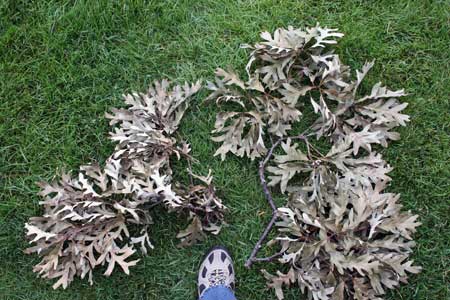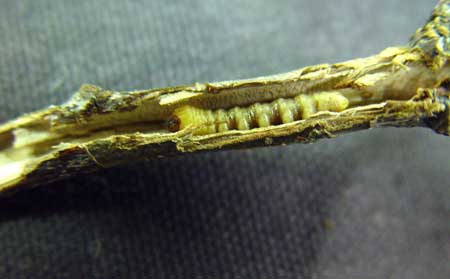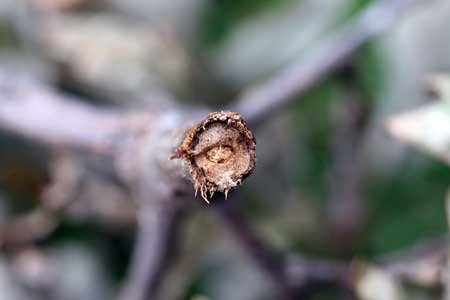Fallen oak branches signal the work of the twig pruner
Editor’s note: This article is from the archives of the MSU Crop Advisory Team Alerts. Check the label of any pesticide referenced to ensure your use is included.
This week several county extension educators reported that they were getting calls from clients that were finding fallen oak branches littering their yards. Many described the end of the branch as being neatly cut off like it had been pruned. This mid-season pruning is work of the twig pruner, Elaphidionoides villosus, (Coleoptera: Cerambycidae). This is one of our more damaging longhorned borers, which are normally considered secondary invaders of declining trees and shrubs. The twig pruner attacks healthy twigs and small branches.
The twig pruner cuts through the twig from the inside, but leaves the bark intact. For a short time the injured branch remains on the tree, but eventually succumbs to the wind, breaks off and falls from the tree. A small oval shaped hole in the end of the branch is a tell-tale sign of the twig pruner. Look closely for this hole because the larva usually packs the opening with a frass plug to keep out predators and other unwanted guests. Twig diameters at the point of the cut usually range from about three-eighths to three-quarters of an inch. Common host trees are reported to include oak, hickory, pecan, walnut, basswood, redbud and hackberry.
Reports of the life cycle of the twig pruner vary somewhat. As we understand it, the females lay eggs in small twigs near the ends of live branches in late spring. The larva eats the inside of the twig, then bores into the center of the branch and tunnels downward. When nearly fully grown, the larva severs the twig or branch by tunneling in circles from the center outward to the bark. Pruned twigs or branches soon break and fall. The larva continues to feed in the severed twig until it pupates. Winter is passed in the severed branch.
Although the sight of many severed branches on one’s lawn can be alarming, there isn’t much that can be done other than picking up the mess and getting on with our lives. Some suggest this pest can be readily controlled by gathering the pruned twigs and burning them. We have our doubts about this. Control with insecticides would require a persistent insecticide and a thorough properly timed spray application. For this reason, spraying is not recommended.



 Print
Print Email
Email






